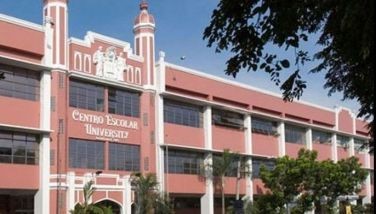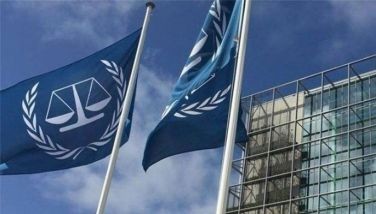‘Petra-fied’
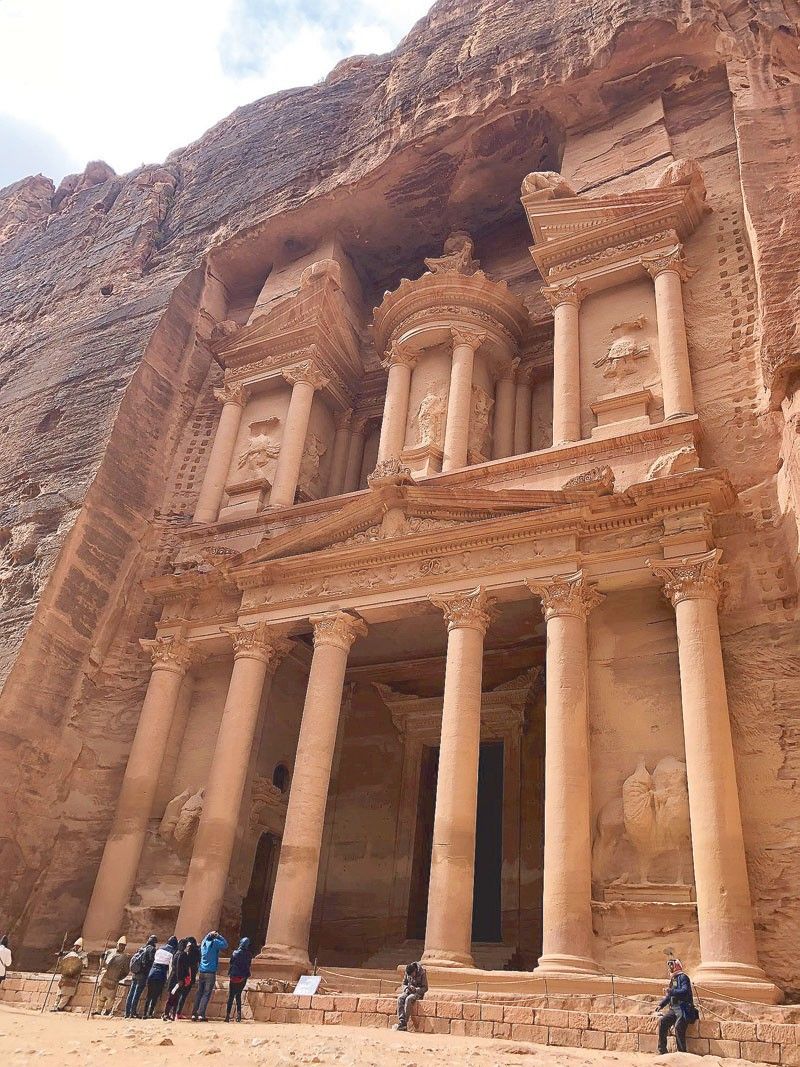
PETRA, Jordan — There is no other word to describe the sensation, after one beholds the 1.2-kilometer gorge of rose-colored ancient temples and tombs carved from sandstone mountains in this former lost city. The cornucopia of sandstone marvels culminates in an awesome monument called “The Treasury,” seemingly etched by a giant chisel on a mountain before Christ was born.
I think I left my jaw somewhere on the stony path that unraveled like a rose-red carpet before me during a visit to this archaeological wonder. Perhaps, so did Harrison Ford in 1989, when he went on location in Petra for the finale of Indiana Jones and the Last Crusade. After that, Petra was a “lost city” no more.
The jaw-dropping focal point, a sort of “promised land” for those who walk the undulating 1.2-kilometer stretch in the cold (as we did) or under the sweltering sun in the summer, is The Treasury.
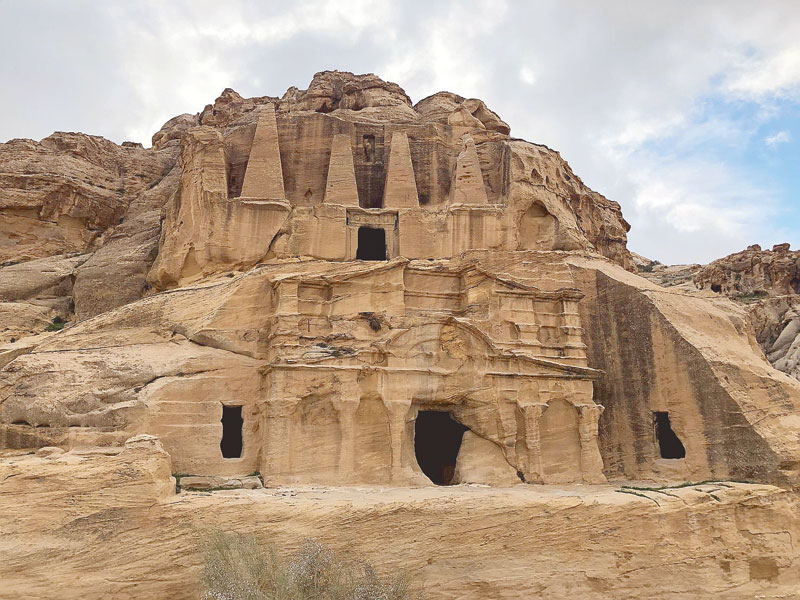
The Obelisk tomb.
Carved from top down out of rose-red rock like a jeweler chisels out facets of a gigantic gem, The Treasury is art, an architectural and engineering marvel. The Treasury and the Monastery, another of the silent witnesses of time before Christ, both have unmistakable Hellenistic features, with ornate Corinthian columns and bas-relief Amazons.
Actually, Petra was only rediscovered by Swiss explorer Johann Burckhardt in 1812, although the village was believed to have been carved in stone 400 years BC. According to National Geographic, “archaeologists have explored less than half of the sprawling site, and in 2016, with the help of satellite imagery, a monumental structure was found still buried in the sand.”
Petra is mentioned in the Bible, according to Fr. Dave Concepcion, the spiritual director of a pilgrimage organized by Manila-based Catholic Travel Inc. Our pilgrimage started in Nazareth in Israel and ended here in Petra, before we flew to Turkey for the final leg.
Symbolic, for after over a week of reflection (my fellow pilgrim Jane Itchon Tan calls it a “witnessing retreat,” for you witness virtually all of the truths of your faith, or at least be a witness in the place where it happened 2,000 years ago) — your faith becomes a rock. A boulder. An edifice. A mountain. Just like Petra.
In Koine Greek (the dialect of Greek used by the authors of the New Testament), petros and petra are masculine and feminine forms of words with the same root and the same definition — rock.
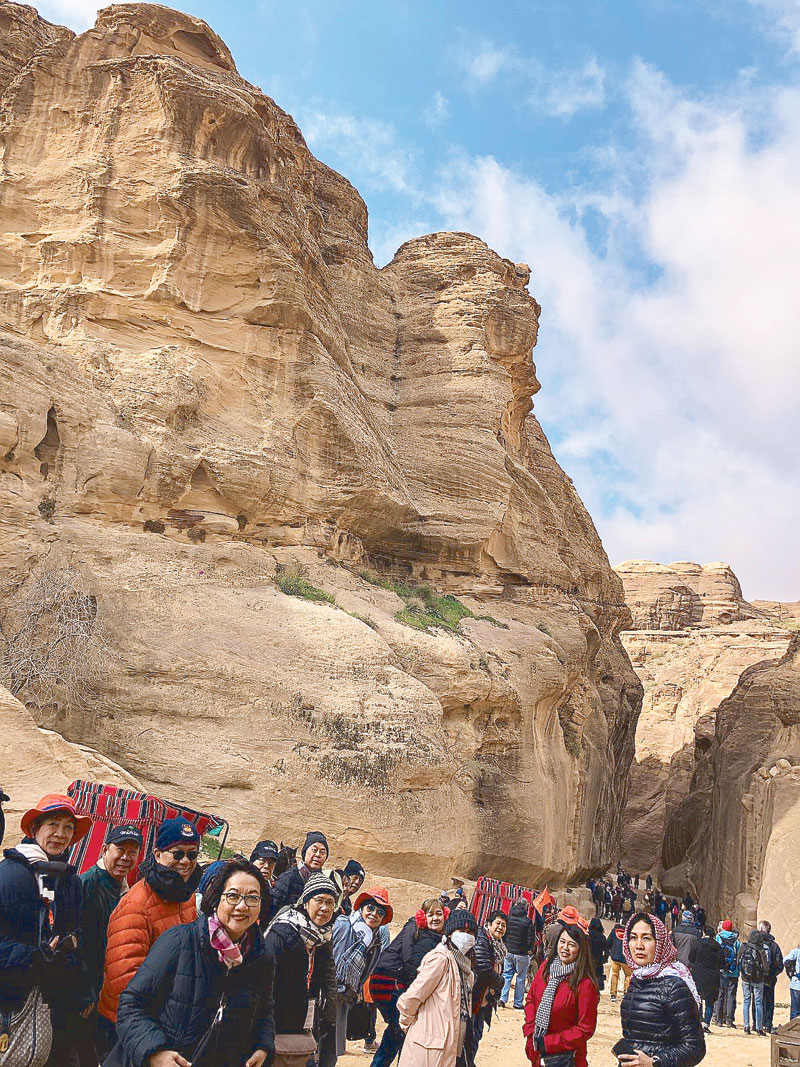
Pilgrims entering the gorge to The Treasury.
Our guide Omar, a Jordanian Christian, told us that “Peter” comes from the word petra or petros. And in our faith, Peter is the “rock” upon which Jesus built His Church.
(“And I tell you, you are Peter, and upon this rock I will build my church, and the powers of death shall not prevail against it.”)
Petra is not a Christian site per se, though it once had Christian churches before the advent of Islam here in 600 AD. But no matter your faith, it can, and should be, solid like Petra. Like a rock.
In fact, Omar pointed out that when something or someone is turned into a stony substance, even as a metaphor, it is “petrified.”
* * *
We motored to Petra after crossing the border that separates Israel from Jordan.
From the moment one exits the Visitors’ Center to begin one’s trek though the gorge (horses and horse-drawn carriages are available, for a fee, for those who choose not to walk) one time travels through a rose-red cornucopia, from which marvel upon marvel just spews out as you walk on the road ahead. One of these is the Obelisk Tomb. A two-story tomb, it has four magisterial obelisks across the top of the tomb, representing Egyptian stylistic ideas.
The siq, or passage, through the gorge is lined by many edifices carved in stone, their façades perfect in their imperfection, defying time, mocking steel and concrete. Nothing is polished or varnished. This unfiltered, raw beauty of Petra is what makes it a unique stunner.
The siq is flanked by more majestic sandstone cliffs and narrows down to an opening between two mountains much like a keyhole. Through this “keyhole,” the magnificent Treasury teases you to come nearer. You walk and emerge from the huge keyhole to behold a building that is at the same time an altar to man’s creative genius: the two-story Treasury, or Al Khazna, one of the Seven Wonders of the World. Estimated to have been built in the first century BC by the Nabataean tribe, it is almost 40 meters high and intricately decorated with Corinthian capitals, friezes, figures and more. Inarguably, it is Petra’s most magnificent façade.
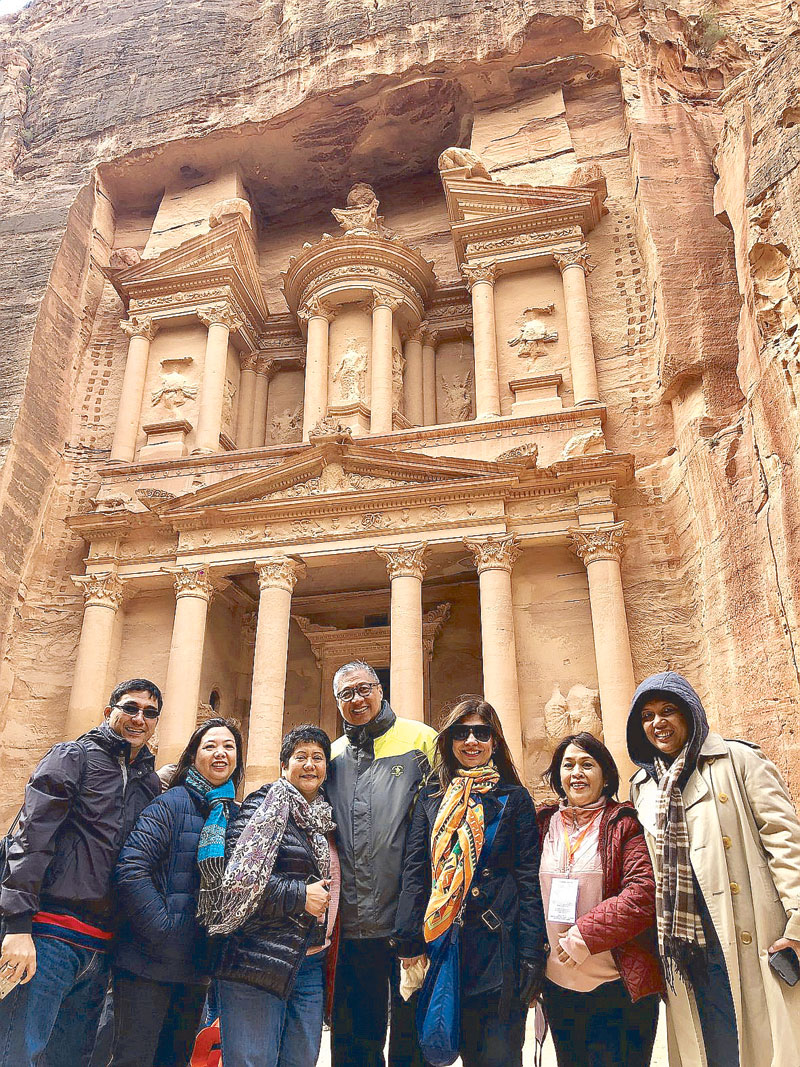
At The Treasury are (from left) Edwin and Alet Fernandez, Aly Placino, Fr. Dave Concepcion, the author, Gina Garcia and Adelwisa Joaquin.
In this ancient city visited by people of many creeds, my faith was petra-fied. Petrified. Still growing, not yet perfect, solid like petros or petra, proud like a rock. Carved and writ in stone. This former “lost city” can make you find the rock of your faith.
(For inquiries, please call Catholic Travel Inc. at 523-2523 or 0918-9110748.)
(Turkish Airlines operates 10 flights daily between Istanbul and Tel Aviv, and two flights daily between Istanbul and Amman. For more information, visit www.turkishairlines.com, call 894-5416 and 864-0600 or e-mail manilasales@thy.com and ticketing@thy.com.)
(You may e-mail me at joanneraeramirez@yahoo.com. Follow me on Instagram @joanneraeramirez.)
- Latest

















